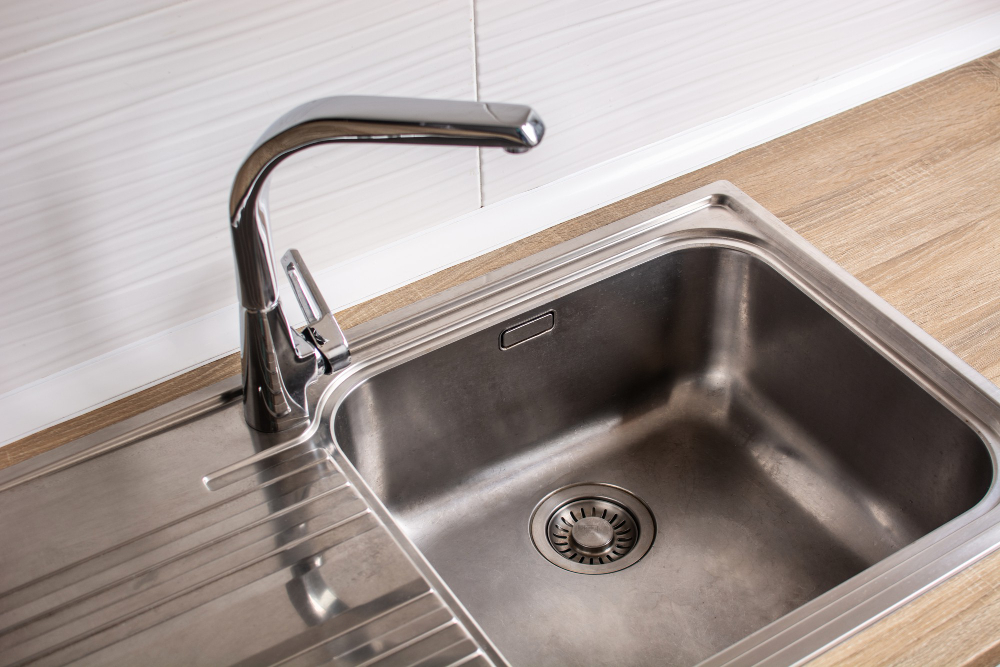
Let’s suppose your bathroom or kitchen sink is broken and you need to buy a new one. You can check online for sinks or visit a physical store looking for the perfect choice. The seller informs you about the two top sink options, undermount sink and drop-in sink.
But now you’re confused between the two. Which one to choose? One sink to buy, two options to select from.
Choosing between drop-in and undermount can be relatively easier if you have the know-how of their differences and common features.
But don’t stress over it. Just go through this detailed comparison of both, and you’ll be able to make the right choice. But first, a brief introduction…
Drop in Sink | Undermount Sink |
Also known as a top-mount or self-rimming sink, the installation of this type of sink involves placing it into the hole in the countertop. | Evident from its name, an undermount sink is installed beneath the countertop, instead of installing it on top. |
The sink rests on top of the countertop surface, and a lip or rim holds it in place. The rim itself sits around the sink’s edge. | Therefore, the sink’s edge is attached to the countertop’s underside, rather than sitting on top of it. |
Underneath the countertops are clips or brackets for securely holding the sink in its place. | It requires reinforcement and secure connection points, as it relies heavily on the countertop for support. |
Let’s start the versus battle between undermount and drop-in sinks:
You’ve already learned how undermount and drop-in sinks are installed. So, first discussing the undermount, you can get an idea that it requires reinforcement and secure connection points, as it relies heavily on the countertop for support.
Drop-in sinks, on the other hand, prove easier to install as it doesn’t require additional structural changes to the countertop or cabinetry. You can easily know the winner here: drop-in sinks. Simple to install through DIY methods or a retrofit option.
Let’s get on to the materials. Both types of sinks are available in different kinds of materials. The difference is in the usage. Undermount sinks are available in materials like porcelain, stainless steel, granite, or quartz.
These materials are best known for their chic, polished look that seamlessly integrates with the countertop.
Drop-in sinks are also available in these materials. But you can go beyond with composite materials or options like enamel-glazed cast irons. The visible rim of this sink enables relatively easier compatibility with more countertop materials than an undermount.
Still, it depends on your personal preference. Want a luxury-driven, clean outlook? Undermount is the best. Want more flexibility with material texture and design? Drop-in is the go-to option.
When it comes to compatibility, undermount sinks are more selective as they need a strong, durable countertop material like quartz or granite to support their weight without risking damage or sagging.
Conversely, drop-in sinks are usually more versatile and can be used with a broader range of countertop materials, including wood, tile, or laminate countertops.
The reason is the elevated rim design of these sinks, which offers tremendous support while also preventing water from spilling over onto the countertop.
The advantage: Drop-in sinks prove ideal for homeowners with different countertop materials. Those who prefer a more integrated, contemporary outlook for a compatible countertop, can trust the undermount sinks.
Both undermount and drop-in sinks can be washed and scrubbed to give a squeaky-clean finish. So, we wouldn’t compare the cleaning results, but the process convenience factor here.
With no edges or rim, undermount sinks can be easily cleaned due to their design. You can easily wipe waste directly into the sink without stomping on hindrances. The countertop also comes with no visible edges or rim for dust or filth accumulation, enabling a convenient clean-up.
Now let’s move on to drop-in sinks. With an observable rim to trap waste at the edges, drop-in sinks prove relatively challenging to clean. The rim’s perimeter requires extra effort to clean any buildup.
However, the difference between undermount and drop-in sink here is not concerning. With proper care and maintenance, both sink types can be kept hygienic.
This one is important and worth paying attention to. Undermount sinks offer relatively more usable countertop space than drop-in sinks.
Reason? These sinks are installed underneath the countertop, allowing the countertop to extend over the sink edges. For smaller kitchens, this configuration proves beneficial to maximize the countertop space.
The observable rim in drop-in sinks takes up a bit of the countertop space, reducing the overall usable area. You might not find the difference to be alarming, but it becomes worth considering while choosing your kitchen layout or if you need as much space as possible for food preparation or other tasks.
This is a huge one. The price difference between undermount and drop-in sinks varies with factors like size, brand, and materials. But we can share the general price trends for comparison.
Undermount sinks often prove costlier than drop-in sinks made from similar materials. The rate difference is due to the extra labour and material costs for undermount installation, plus its signature deluxe finish.
Contrariwise, drop-in sinks prove more budget-friendly because they can be easily created and installed.
But remember, you can still find different price ranges for each sink type. So before making any decision, you need to be clear on your budget, functional requirements, and kitchen design preferences.
To summarize the drop-in versus undermount comparison:
The clear answer is, there is no outright winner. Where undermount is known for its premium outlook with no edges to trap debris and more space availability, the installation costs and general market rate makes it a costly option.
Conversely, drop-in sinks provide more flexibility with material options and offer easier installation and cost-cutting benefits. It’s cleaning difficulties and relatively less chic outlook would be something you would’ve to compromise on. So, it all comes down to your personal preferences, requirements, and budget.
If you need any help with installation, contact JD Handy Pro at +1-571-831-2030. Installed right, sealed tight – We’re your one-stop shop for kitchen refurbishment plus several other handyman services in Sterling Va, providing reliable hands and real results.

Get the latest updates via email. Don’t miss it. Any time you may unsubscribe.